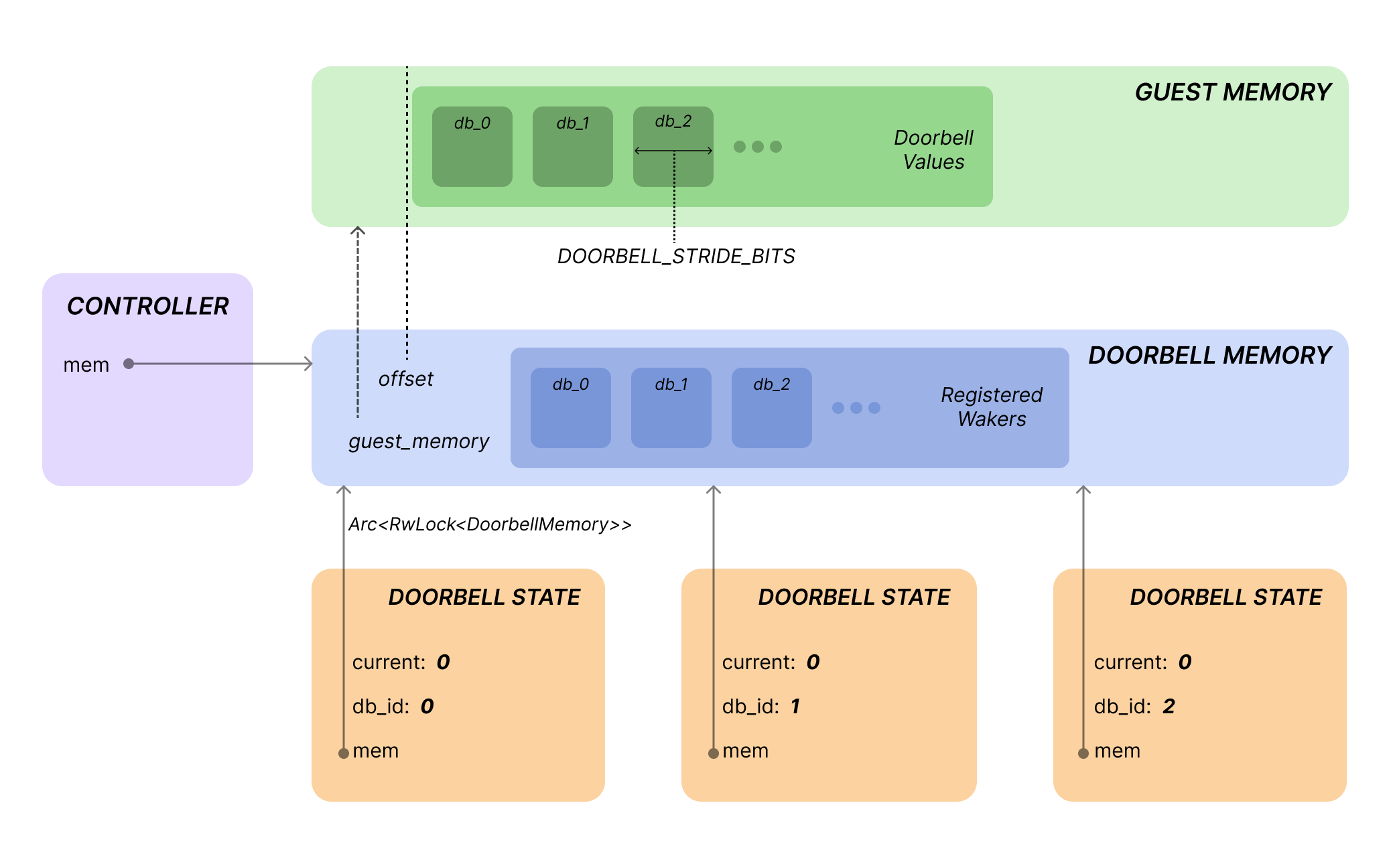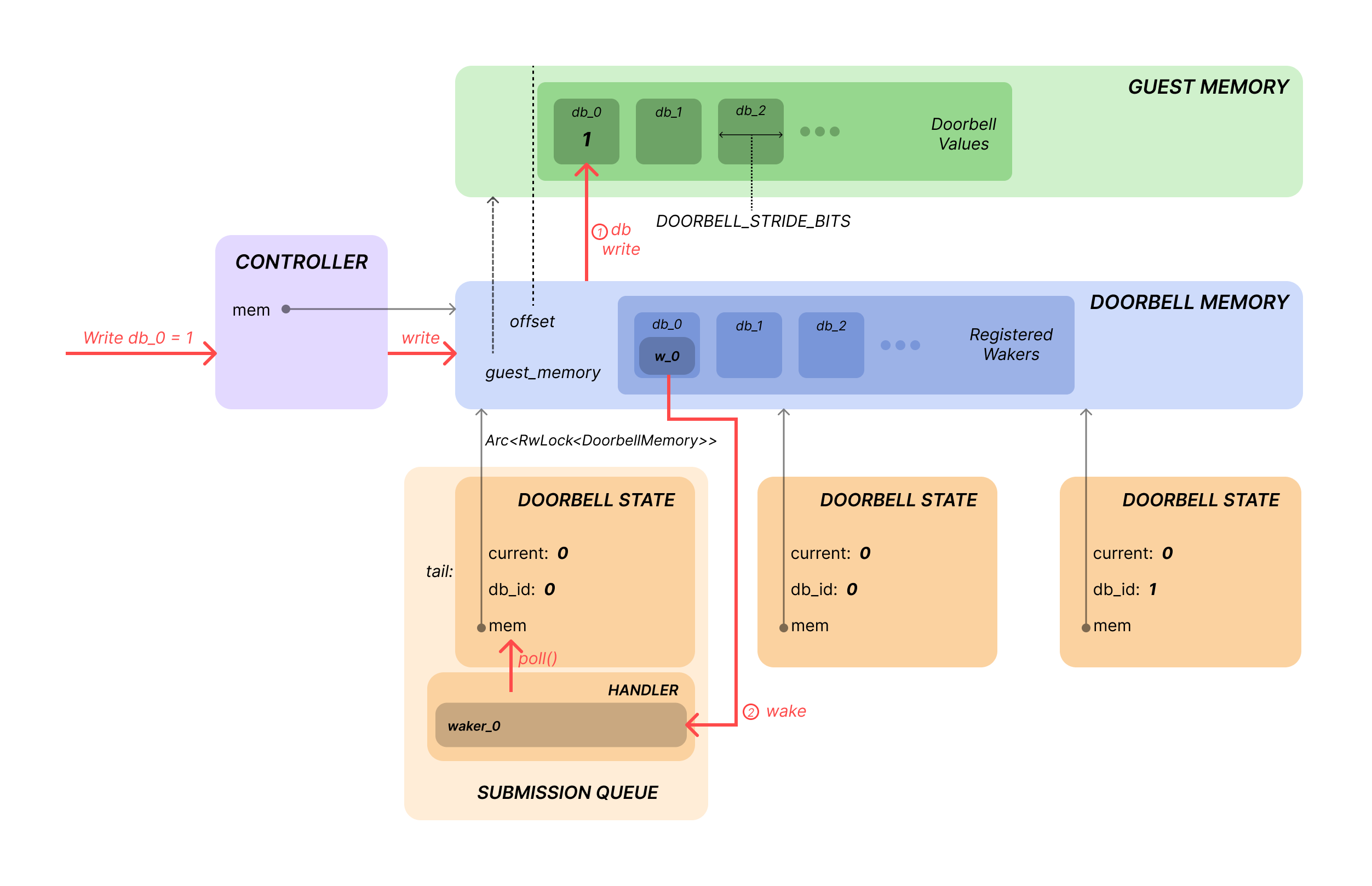Doorbells
The doorbell notification system in the NVMe emulator is built around two core structures: DoorbellMemory and DoorbellState. These components work together to coordinate doorbell updates between the guest and the device, following a server-client like model.
 Fig: Basic layout of DoorbellMemory and DoorbellStates.
Fig: Basic layout of DoorbellMemory and DoorbellStates.
Doorbell Memory
DoorbellMemory serves as the central authority for managing doorbell values. It maintains:
- A reference to guest memory, where doorbell registers are mapped.
- A vector of wakers—one per doorbell—to notify tasks when a doorbell is updated.
The emulator creates this struct upon instantiation. All queues receive a reference to the entire list of doorbells. Doorbell writes are handled by the emulator’s PCI interface, which forwards the writes to DoorbellMemory.
Doorbell State
DoorbellState is used by tasks that need to track the value of a specific doorbell. In the NVMe emulator, the SubmissionQueue::tail and CompletionQueue::head are each stored as a DoorbellState. This struct abstracts interactions with DoorbellMemory and synchronization. Tasks can poll the doorbell state. Poll::Ready is returned if the doorbell value was updated.
Waker functionality
To conserve system resources, DoorbellMemory and DoorbellState use wakers to reduce busy-polling when there is no additional work/updates to the doorbell. Instead of repeatedly polling a future value of the corresponding doorbell, when DoorbellState notices no change to the doorbell value, it registers a waker DoorbellMemory and stops polling. When a doorbell write to bar0 is triggered by the guest, DoorbellMemory will write the new value and trigger the corresponding waker, at which point DoorbellState can poll() again and is guaranteed a change to the value (i.e. more work to go do)
 Fig: When a doorbell write comes in and there is a waiting queue, the waker is triggered by DoorbellMemory if there is a registered waker.
Fig: When a doorbell write comes in and there is a waiting queue, the waker is triggered by DoorbellMemory if there is a registered waker.